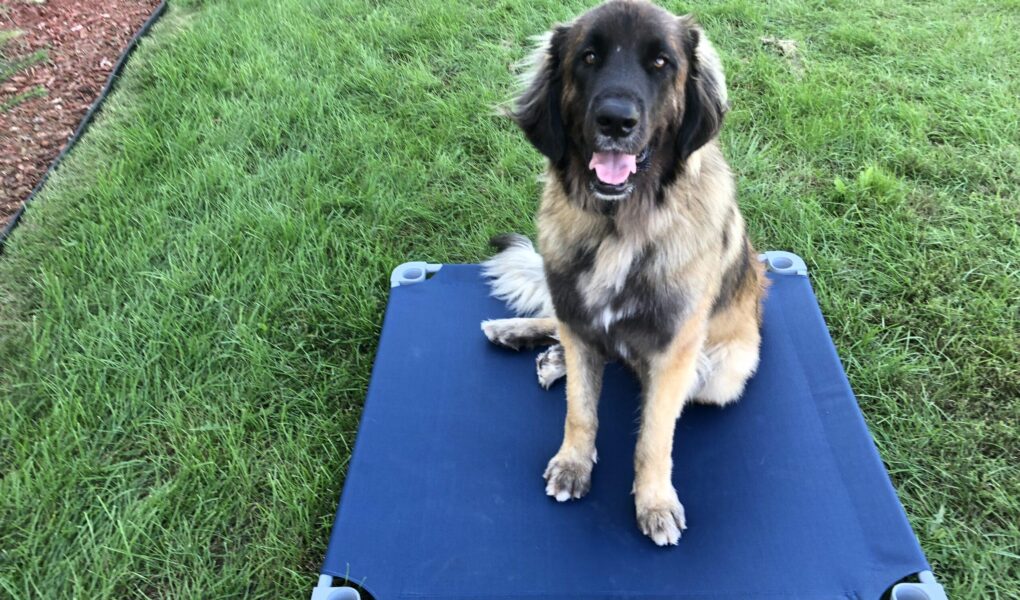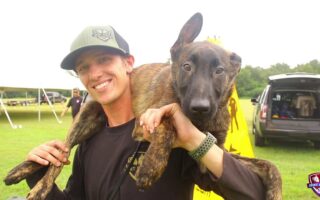Unleashing the Power of Place Training for Your Dog
Bringing a furry companion into our lives often paints a vivid picture of joyous walks in the park, cozy snuggles on the couch, and endless games of fetch. However, the journey of dog ownership also involves a commitment to training and nurturing good behavior. Among the various training techniques available, place training stands out as a practical tool that cultivates discipline while enhancing the bond between you and your dog. This method teaches your pooch the essential skill of settling in a designated spot, providing them with a sense of security and helping to create a harmonious living environment. In this article, we’ll explore the fundamentals of place training, its benefits, and practical tips to seamlessly integrate this technique into your daily routine. Whether you’re starting with a spirited puppy or an older dog in need of a refresher, you’ll discover that with patience and consistency, the journey to a well-trained companion is within reach.
Table of Contents
- Understanding the Concept of Place Training and Its Benefits
- Essential Tools and Techniques for Successful Place Training
- Common Challenges in Place Training and How to Overcome Them
- Building Consistency and Rewarding Success in Place Training Sessions
- Q&A
- In Retrospect
Understanding the Concept of Place Training and Its Benefits
Place training is a fundamental aspect of obedience training that teaches dogs to go to a specific spot and stay there until released. This technique utilizes positive reinforcement to create a safe and calm environment where your dog can relax or watch the world go by. By establishing a designated ”place,” such as a mat or bed, you’re giving your dog clear boundaries, which drastically reduces anxiety and promotes good behavior. It becomes a cozy retreat amidst the hustle and bustle of daily life, serving as a tool for both training and comfort.
Implementing place training yields a plethora of benefits that contribute to a well-mannered pet. Here are some key advantages:
- Improved Focus: Instructing your dog to stay in a specific area helps them focus better in distracting environments.
- Safety: A reliable place command can keep your dog away from potential hazards during busy times.
- Enhanced Hospitality: Teaching your dog to settle in their spot while guests arrive creates a more welcoming atmosphere.
- Behavior Management: It effectively curbs unwanted behaviors, like jumping on guests or excessive barking.
Essential Tools and Techniques for Successful Place Training
To embark on a successful place training journey, it’s imperative to equip yourself with the right tools and techniques. A comfortable mat or bed is essential, providing a designated space for your dog to settle comfortably. Clickers and treats work wonders for positive reinforcement, allowing you to reward your pup instantly for good behavior. Additionally, a leash or long line helps maintain control during training, especially when your dog is learning to stay in one spot. Remember to have some patience and consistency at hand; these are invaluable when building your dog’s understanding of the place command.
Implementing structured practices will also enhance the effectiveness of place training. Begin with the following strategies:
- Short Sessions: Training should consist of brief, focused sessions to maintain your dog’s interest.
- Gradual Increase in Duration: Start with just a few seconds and gradually increase the time as your dog becomes more comfortable.
- Disturbances Practice: Add distractions over time to teach your dog to remain in place despite stimuli.
For tracking progress, consider using a simple table to monitor your dog’s improvement:
| Session Number | Duration in Place (seconds) | Distraction Level |
|---|---|---|
| 1 | 5 | Low |
| 2 | 10 | Medium |
| 3 | 15 | High |
Common Challenges in Place Training and How to Overcome Them
Training your dog to stay in a designated spot can be rewarding, but it’s not without its hurdles. One common challenge is distraction. Dogs are naturally curious creatures, and an unfamiliar noise or a passing squirrel might easily divert their attention. To combat this, it’s essential to gradually increase the level of distractions during training sessions. Start in a quiet environment and gradually introduce different stimuli while practicing. Keeping training sessions short and engaging can also help maintain your dog’s focus.
Another frequent issue is the dog’s inability to remain in place for extended periods. New trainers often expect too much too soon. It’s important to build up to longer durations gradually. Use a timer and reward your dog for staying in place for a few seconds initially, then slowly increase the time as they become more comfortable. Consider employing tools like a comfortable mat or bed for your dog to associate a physical space with the command to help reinforce the behavior. Additionally, consistency in commands and reward systems will establish clear expectations and make training more effective.
Building Consistency and Rewarding Success in Place Training Sessions
Establishing a consistent routine is crucial when conducting place training sessions. Dogs thrive on routine, and by setting a specific time and location for training, you create an environment that fosters learning and understanding. Key components to focus on include:
- Regular schedule: Train at the same time every day to create a habit.
- Defined space: Use a designated area that becomes associated with training.
- Clear commands: Use the same words for commands each time to avoid confusion.
Rewarding success is equally important to reinforce positive behaviors. Recognizing your dog’s achievements, no matter how small, boosts their confidence and encourages them to repeat those behaviors. Consider employing a variety of rewards, such as:
- Treats: Provide high-value snacks when your dog successfully remains in the place.
- Praise: Use enthusiastic verbal affirmations to show your approval.
- Playtime: Incorporate a fun, short play session after a successful training period.
| Reward Type | Effectiveness |
|---|---|
| Treats | High - Immediate gratification |
| Praise | Medium – Builds emotional connection |
| Playtime | High – Encourages excitement |
Q&A
Q&A: Place Training Your Dog
Q: What is place training?
A: Place training is a method that teaches your dog to go to a designated spot and remain there until released. This spot can be a bed, mat, or any area you choose, and it helps establish boundaries for your dog while promoting calmness and good behavior.
Q: Why should I consider place training for my dog?
A: Place training is beneficial for several reasons. It provides your dog with a clear understanding of where they should be, reduces distractions, and can help manage typical dog behaviors like jumping on guests, begging for food, or being overly excited. It’s particularly useful in busy environments or when you need your dog to settle down.
Q: At what age can I start place training my puppy?
A: You can begin place training as soon as your puppy is home, typically around 8 weeks old. Puppies are most receptive to learning, so introducing them to place training early can help establish good habits that will follow them into adulthood.
Q: What materials do I need for place training?
A: To start place training, you’ll need a designated place for your dog, such as a dog bed, mat, or blanket. You might also want some treats to encourage your dog during training sessions. Optional but helpful items include a leash and collar or harness to guide your dog initially.
Q: How do I actually train my dog to go to their place?
A: Begin by leading your dog to their designated place using their leash. Encourage them to sit or lie down. Once they’ve settled, reward them with treats and praise. Gradually increase the duration they stay on the place before rewarding them. Repeat this process, always using a release command to let them know when they can leave the spot.
Q: What if my dog won’t stay in their place?
A: It’s essential to remain patient and consistent. If your dog struggles to remain in place, you may need to shorten the length of time they are required to stay there. Most importantly, ensure you are rewarding them for good behavior when they do stay. Gradually increase the time as they become more comfortable.
Q: How can I make place training more engaging for my dog?
A: To make place training enjoyable, you can incorporate games, such as tossing a toy just beyond the place for them to retrieve after being released. Adding various commands, colorful mats, or even different areas around the house can keep the training fresh and exciting.
Q: Can place training help with anxiety or destructive behavior?
A: Yes! Place training can create a sense of structure and predictability for dogs, which may help alleviate anxiety. By teaching your dog a dedicated spot where they can feel secure and calm, you can redirect their energy away from destructive behaviors.
Q: How long will it take to successfully train my dog?
A: The timeline for place training varies by dog, but many dogs begin to understand the concept within a few sessions. Consistency and patience are key—regular practice combined with positive reinforcement will lead to success and a well-trained dog.
Q: Is place training suitable for all dog breeds?
A: Absolutely! Place training can be beneficial for dogs of all breeds and temperaments. Each dog may respond differently, so adapting your approach to suit your dog’s unique personality and energy level will help ensure a successful training experience.
Q: What should I do if my dog masters place training?
A: Once your dog has mastered place training, you can gradually increase the difficulty by introducing distractions, asking them to stay longer, or having them perform the command in different environments. Continuing to challenge your dog mentally will keep their skills sharp and enhance their training further.
—
With patience and positive reinforcement, you can teach your dog this valuable skill, creating a harmonious living environment for both of you. Happy training!
In Retrospect
As we draw our exploration of place training for dogs to a close, it becomes evident that this method is not just about teaching your furry friend where to settle down—it’s about fostering an environment of trust, communication, and companionship. By creating a designated spot for your dog, you empower them with a sense of security while encouraging good behavior around the house. As you embark on this rewarding journey, remember that patience and consistency are your greatest allies. Each wagging tail and content sigh echoes the success of your efforts, weaving a deeper bond between you and your canine companion. So, gather your supplies, set your goals, and step into the world of place training; a harmonious living space and a happy dog await!

